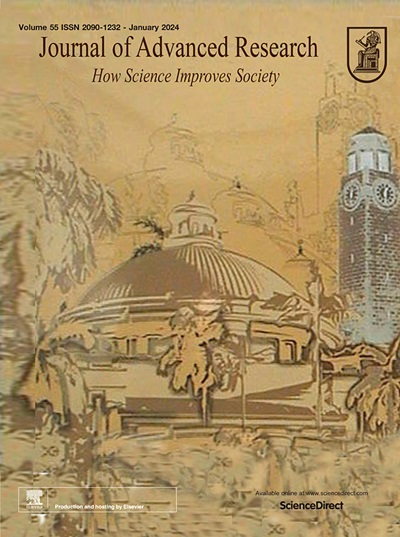IF 11.4
1区 综合性期刊
Q1 MULTIDISCIPLINARY SCIENCES
引用次数: 0
摘要
背景植物细胞外小泡(PEVs)在中枢神经系统(CNS)疾病中发挥了重要作用。细胞外小泡是一种介导细胞间通讯的纳米级小泡(30-150 nm),因其天然的生物相容性、极低的免疫原性和穿越血脑屏障(BBB)的能力而具有独特的治疗潜力。本综述全面分析了 PEVs 在中枢神经系统疾病中的作用,重点关注其作用机制、治疗潜力以及与哺乳动物细胞外囊泡 (MEVs) 和合成递送系统相比的优势。主要科学概念PEV源自水果、蔬菜和药用植物,含有生物活性分子,如蛋白质、脂类、微小核糖核酸(miRNA)和核酸。这些囊泡能够通过受体介导的转运和膜融合穿越 BBB,为中枢神经系统疾病(包括神经炎症、缺血性中风和胶质瘤)提供治疗效果。它们的药理作用源于姜酚、生物碱和类黄酮等活性代谢物,这些物质可以调节免疫反应、维持 BBB 的完整性并减少神经元凋亡。尽管具有这些优势,但高效提取方法、标准化和可扩展性等挑战仍然是临床应用的障碍。通过先进的提取技术、改进的表征方法和优化的药物负载策略来解决这些问题,可以提高 PEVs 的临床实用性。本文章由计算机程序翻译,如有差异,请以英文原文为准。

Plant extracellular vesicles as emerging neuroprotective agents for central nervous system disorders
Background
Plant extracellular vesicles (PEVs) have emerged important roles in central nervous system (CNS) disorders. PEVs are nanoscale vesicles (30–150 nm) that mediate intercellular communication and exhibit unique therapeutic potential due to their natural biocompatibility, minimal immunogenicity, and ability to cross the blood–brain barrier (BBB). With increasing interest in neurotherapeutics, PEVs offer promising applications for CNS disorders by overcoming delivery barriers and reducing adverse effects associated with synthetic nanoparticles.Aim of review
This review provides a comprehensive analysis of the role of PEVs in CNS disorders, focusing on their mechanisms of action, therapeutic potential, and advantages over mammalian extracellular vesicles (MEVs) and synthetic delivery systems. It also highlights emerging research, challenges, and future directions for their clinical translation.Key scientific concepts of review
PEVs, derived from fruits, vegetables, and medicinal plants, contain bioactive molecules such as proteins, lipids, microRNAs (miRNAs) and nucleic acids. These vesicles demonstrate the ability to traverse the BBB through receptor-mediated transport and membrane fusion, delivering therapeutic effects for CNS disorders, including neuroinflammation, ischemic stroke, and gliomas. Their pharmacological benefits stem from active metabolites, such as gingerols, alkaloids, and flavonoids, which modulate immune responses, maintain BBB integrity, and reduce neuronal apoptosis. Despite their advantages, challenges such as efficient extraction methods, standardization, and scalability remain obstacles to clinical application. Addressing these issues through advanced extraction techniques, improved characterization, and optimized drug loading strategies can enhance the clinical utility of PEVs.求助全文
通过发布文献求助,成功后即可免费获取论文全文。
去求助
来源期刊

Journal of Advanced Research
Multidisciplinary-Multidisciplinary
CiteScore
21.60
自引率
0.90%
发文量
280
审稿时长
12 weeks
期刊介绍:
Journal of Advanced Research (J. Adv. Res.) is an applied/natural sciences, peer-reviewed journal that focuses on interdisciplinary research. The journal aims to contribute to applied research and knowledge worldwide through the publication of original and high-quality research articles in the fields of Medicine, Pharmaceutical Sciences, Dentistry, Physical Therapy, Veterinary Medicine, and Basic and Biological Sciences.
The following abstracting and indexing services cover the Journal of Advanced Research: PubMed/Medline, Essential Science Indicators, Web of Science, Scopus, PubMed Central, PubMed, Science Citation Index Expanded, Directory of Open Access Journals (DOAJ), and INSPEC.
 求助内容:
求助内容: 应助结果提醒方式:
应助结果提醒方式:


